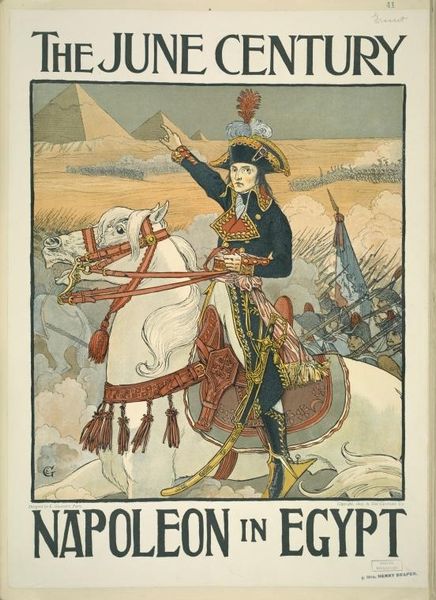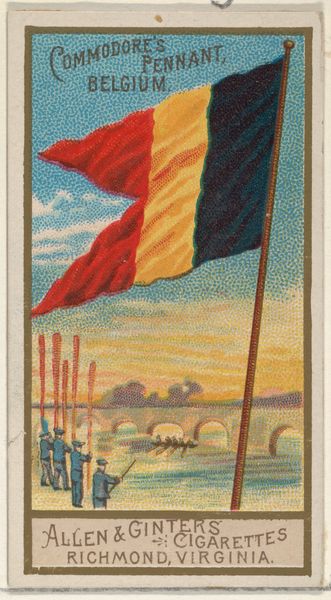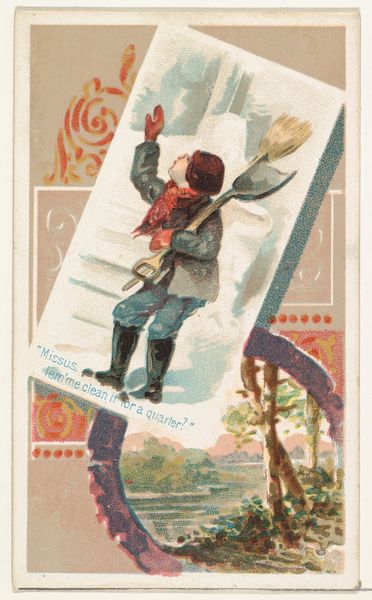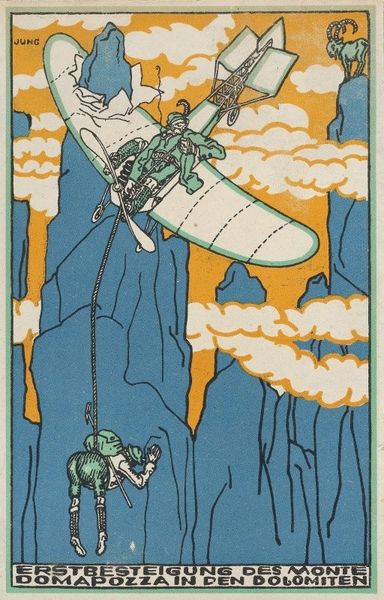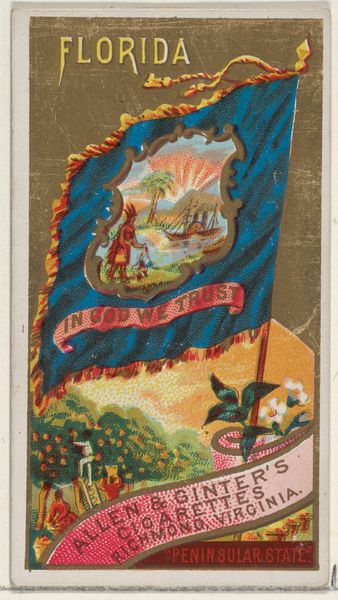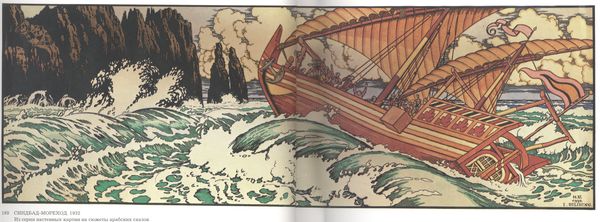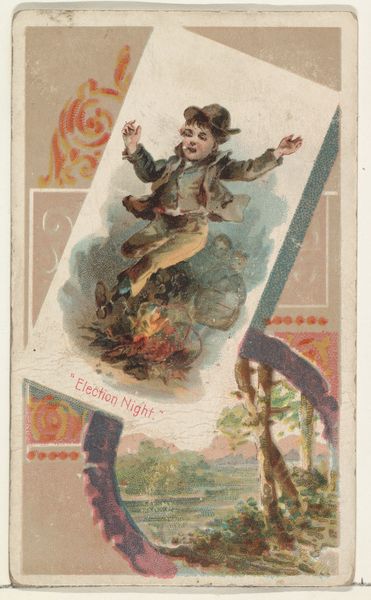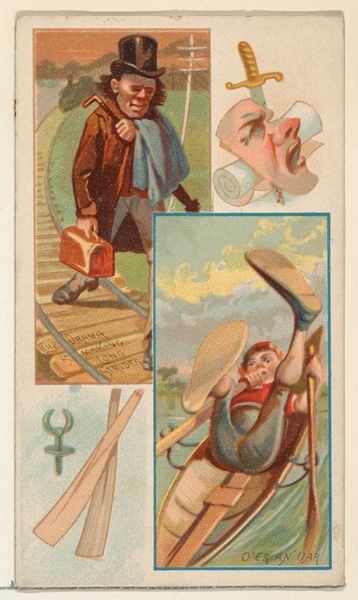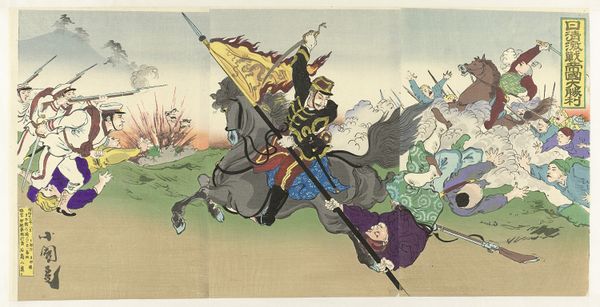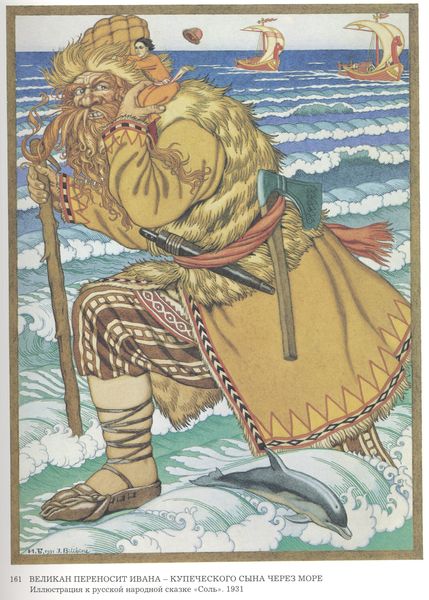
print, watercolor
#
narrative-art
# print
#
landscape
#
watercolor
#
modernism
#
watercolor
Dimensions: length 14 cm, width 9 cm
Copyright: Rijks Museum: Open Domain
Curator: This curious watercolor work is titled "Voorheen, nach Paris!" Created in 1919 by Leo Gestel, it’s currently held here at the Rijksmuseum. What's your initial take? Editor: A potent, unsettling fairy tale. There’s a peculiar combination of dread and dreaminess in the color palette and somewhat amateur, naive line work that really catches the eye. It's almost as if a medieval tapestry and early 20th-century anxieties have crashed into each other. Curator: Indeed. Gestel lived through both World Wars. This print, which mixes watercolor with a naive landscape, shows an army and a heroic commander, as well as primitive-looking fighter planes, juxtaposing old and new methods of warfare. Editor: The layering of imagery speaks to that upheaval in production and materiality of war. You have hand-painted details over what appear to be quickly applied washes— suggesting a frenetic, anxious mode of working reflecting the experience of many factory laborers contributing to war efforts. Look at those swathes of pigment representing masses of identical troops or aircraft—there is little individuation! Curator: It's also hard not to note the roses in the foreground. Such a sharp, perhaps sarcastic, contrast with the title – “Before, to Paris!” - a clear reference to pre-war, nationalistic and propagandistic ambitions. They almost read like ironic headstones on the path to war. Editor: Roses, planes, soldiers... It’s like Gestel assembled remnants of past pastoral glories to highlight the industrialized reality of post WWI and perhaps also to indict a collective mindset geared toward expansion. I keep coming back to the processes he engaged to construct the overall piece - it seems to highlight both artistic production and larger scales of industry. Curator: Right, that tension is very alive. He merges the personal artistry of a painterly medium with suggestions of mass production and the devastation it facilitated. What stays with me, though, is that even amid such somber context, there is still a spark of human reflection present here. Editor: Ultimately, it’s the piece's internal contradictions, between gesture and fabrication, intention and reception, that hold the eye long after we walk away.
Comments
No comments
Be the first to comment and join the conversation on the ultimate creative platform.

